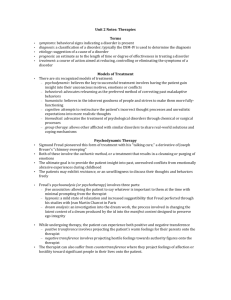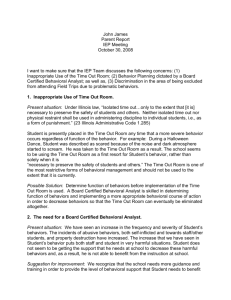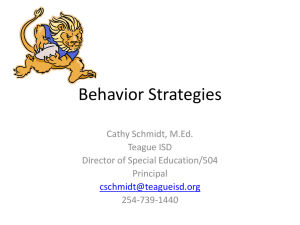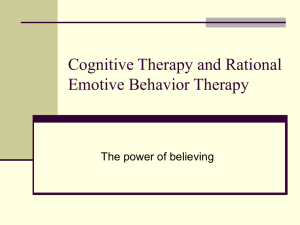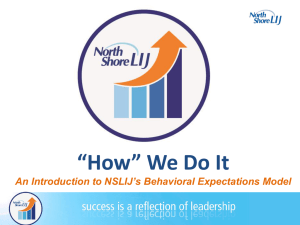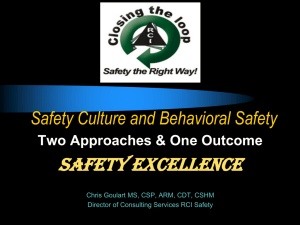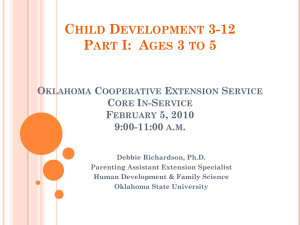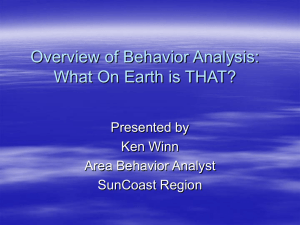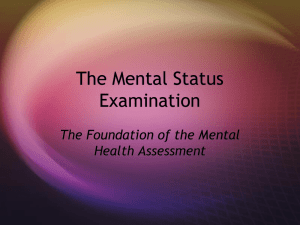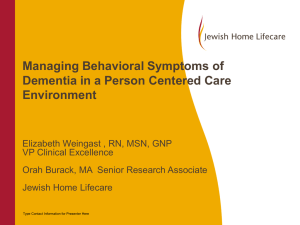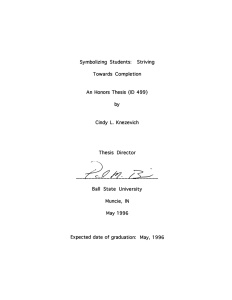Social Cognitive Theory
advertisement
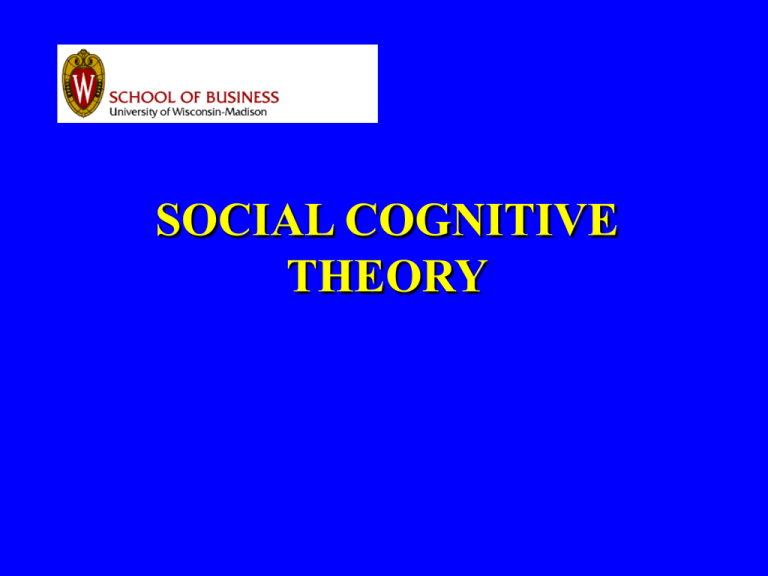
SOCIAL COGNITIVE THEORY Social Cognitive Theory Albert Bandura (1986) TRIADIC RECIPROCAL CAUSATION Environment Person Behavior INTERACTING BIDIRECTIONAL INFLUENCES Relative influences exerted by one, two, or all of the three interacting factors on human behavior will vary depending on different activities, different individuals, and different circumstances. For example: • Environment • If people are dropped into deep water, they will all promptly swim however uniquely varied they might be in their cognitive or behavioral repertoires. • Past Behaviors • On the other hand, if a person plays piano for his/her own enjoyment, such behavior is self-regulated over a long period of time by its sensory effects, and cognitive and environmental influences are involved in this process by a lesser extent. • Personality • In deciding what book to check from the library, personal preferences hold the sway. SIX BASIC HUMAN CAPABILITIES Symbolizing Capability • Humans have an extraordinary symbolizing capability which allows them to successfully change and adapt to their respective environments. • By using symbols, people process and transform visual experiences into internal cognitive models that in turn serve as guides for future actions. • Through symbolizing activity, people also ascribe meaning, form, and duration to their past experiences. Forethought Capability • SCT postulates that people do not only react to their environments, but they also self-regulate their behaviors by forethought. • People plan courses of action for the near future, anticipate the likely consequences of their future actions, and set the goals for themselves. • Thus, rather than learning proper behavioral responses only by enacting behaviors and possibly suffering painful costs of missteps, people usually test possible solutions cognitively first, and then eliminate or accept them on the basis of perceived outcomes before engaging into action. • Thus, through forethought, people initiate and guide their actions in an anticipatory fashion. In other words, the future acquires causal properties by being represented cognitively by forethought exercised in the present. Vicarious Learning Capability •According to SCT, almost all forms of learning can occur vicariously by observing the behavior of others and subsequent consequences of their behaviors. •The human capacity to learn by observation enables people to obtain and accumulate rules for initiating and controlling different behavioral patterns without having to acquire them gradually by risky trial and error. •The acquisition of knowledge vicariously is critical for both learning and human performance. Since behavioral trials and errors can (and often do) result in costly consequences, chances for effective performance would be seriously diminished if employees were able to learn only from the consequences of their actions. •The more complex the action, and the more costly and hazardous the possible mistakes, the stronger must be the reliance on vicarious learning from competent models. Self-Regulatory Capability • Much of human behavior is initiated and regulated by internal self-set standards, and self-evaluative reactions to exerted behaviors. • After personal standards have been set, incongruity between behavior and the standard against which it is measured, activate self-evaluative reactions, which, in turn, serve to further influence subsequent action. • Even if there is no incongruity between self standards and present performance, people may set higher standards for themselves and activate future behaviors to satisfy the new standards. Self-Reflective Capability • The self-reflective capability can be defined as human self-reflective consciousness. • Self-reflective consciousness enables people to think and analyze their experiences and thought processes. • By reflecting on their different personal experiences, people can generate specific knowledge about their environment and about themselves. • Among the types of knowledge that people can derive from self-reflection, importantly, none is more central to human agency than people's judgment of their capabilities to deal effectively with different environmental realities. • These types of perceptions are referred to as self-efficacy beliefs.


